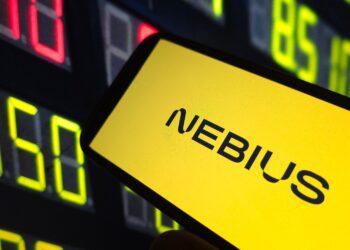How technology is reshaping manufacturing.
Smart technologies are bringing about a new industrial paradigm based on advanced automated decision-making processes, sensors, connectivity and the Internet of Things (IoT) that is radically changing manufacturing processes.
We are on the brink of what is rightly called the “Fourth Industrial Revolution.” Steam and electric power ushered in the first two revolutions, respectively, with automation igniting the third. Tremendous recent technological advancements that are making machines significantly “smarter” and that, combined with the Internet of Things (IoT), is blurring the lines between the physical and digital worlds, dramatically reshaping today’s industrial landscape— and marking a distinct Fourth Revolution.
While industrial markets traditionally have been late adopters of technology, an inflection point has been reached over the past several years. As older engineers and manufacturing executives retire and are replaced by digital natives, the rate of adoption of cutting-edge technology among industrial companies has accelerated.
For C-suite level executives in any industry, it is important to understand how increasingly sophisticated forms of automation, sensors (such as machine vision), software, and services are working together to create a virtuous circle that makes today’s manufacturing environments more intelligent, more adaptable and therefore more productive.
THE RISE OF INTELLIGENT MACHINES
After George Devol in 1954 invented the Unimate mechanical arm, widely considered to be the first industrial robot, robots and other forms of automation began redefining manufacturing, mostly in automotive and other heavy industrial environments. Over the first five decades of the robotic revolution, machines run by programmable logic controllers (PLCs) became effective at handling linear, repeatable tasks, freeing human workers to focus on jobs that required finer motor skills and dynamic decision-making.
Recent advancements in motion control and mechanics combined with real-time data gathering and processing have created an inflection point in robotics use, allowing industrial companies to get closer to achieving true automation in a broadening array of applications and environments, including both discrete manufacturing processes such as assembling consumer electronics, and continuous processes such as manufacturing chemicals or pharmaceuticals.
In addition to being smarter and more adaptable, today’s robots are also safer and much easier to program. In the past, safety concerns meant that human workers needed to be cordoned off from the machines and it took a skilled engineer to program a system. Today’s collaborative robots can work alongside human workers and can reliably detect and adapt to their environment, vastly enhancing worker productivity.
The adoption of robots has skyrocketed since 2009’s Great Recession. Annual sales of industrial robots globally increased at a compound annual rate of 16% from 2010 to 2015 and are expected to reach 414,000 units in 2019, according to the IFR World Robotics 2016.
In this environment, manufacturers with advanced automation capabilities are realizing competitive advantages and investors are rewarding them with stronger valuations. is trend shows no signs of slowing. President Donald Trump’s efforts to bring more manufacturing jobs back to the United States may result in a short-term jump in US’ manufacturing employment. But over the longer term, the higher labor costs in the United States will create pressure for industrial companies to increase their use of automation to stay competitive globally.
SENSORS AND VISION: FUELING AUTOMATION
A machine’s ability to make smart decisions is limited by the quality of the data collected and the speed at which that data can be analyzed and action taken. Thus, the rise of intelligent machines has coincided with advancements in sensor and vision technology.
Industrial environments create vast amounts of perishable data. For the data to be valuable and actionable, it needs to be rapidly transmitted across a network and analyzed. Many applications for sensors are ideally suited for remote, harsh environments with limited infrastructure such as mines or refineries. Older technology was not up to the task. But sensors are becoming smaller, smarter and more durable, with some battery-powered and WiFi–enabled, vastly increasing the number of environments where they can be deployed.
Often a manufacturer’s sins are captured and waiting to be discovered in inventory. The use of sensor technology is allowing manufacturers to identify quality issues as they occur and address them before they become expensive problems for the manufacturer and end-user. Capturing defects as early as possible in the manufacturing cycle creates significant value for both the end-user and manufacturer.
In addition to quality control, cameras working in tandem with analytics software have opened up new forms of business intelligence across industries. Merchandising and promotion experts at big-box retailers can use cameras to generate insights about traffic flow across stores under different conditions.
HARDWARE + SOFTWARE + SERVICES
In the past, the user of a piece of manufacturing equipment would purchase the machine from one company, the software to run the facility from another company, and the services to maintain and repair the equipment from a third company. Hardware providers have realized, however, that also providing software and services can result in attractive sources of additional revenue and strengthen relationships with existing customers. As a result, the lines that once separated hardware, software, and services companies in industrial markets have drastically blurred.
Offering software also provides a powerful form of differentiation. A good example of this is using software to simulate complex systems, such as an automated warehouse or traffic in and out of a city. Simulation allows an end-user to see how an automated solution would perform in a specific environment, significantly reducing risk.
The old industrial services model could be simplistically described as “wait for the machine to break and then hire someone to come fix it.” Improvements in and adoption of sensors and implementation of complex data analysis, however, now allow hardware manufacturers to provide predictive maintenance and repair hardware before a line goes down. These high-margin, high-value services typically improve a supplier’s financial profile while achieving better penetration of the aftermarket.
INVESTMENT OPPORTUNITIES IN INDUSTRIAL TECH
While automation, sensor and vision technology as well as new convergent business models are quickly gaining traction across industrial markets, we are still in the early innings of the Fourth Industrial Revolution. The industrial technology sector has an enormous total addressable market, and the companies that operate in these markets are experiencing growth rates that more closely resemble technology companies than industrial companies.
As a result, industrial companies that offer leading-edge automation solutions and companies that have incorporated software and services into their business models are achieving robust valuations in the public and M&A markets. While some companies have been able to achieve significant scale, the sector remains highly fragmented and there are ample opportunities for investors—both financial sponsors and strategic acquirers—to participate.












